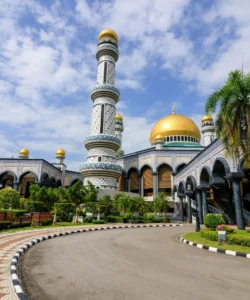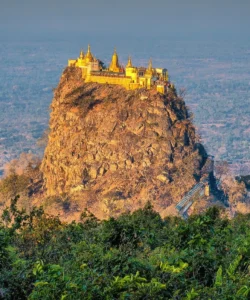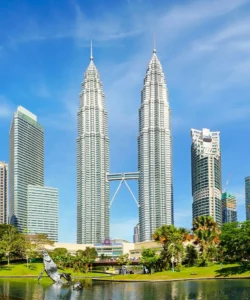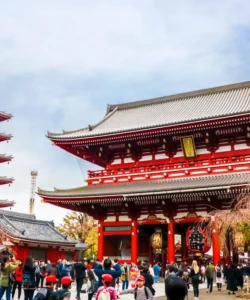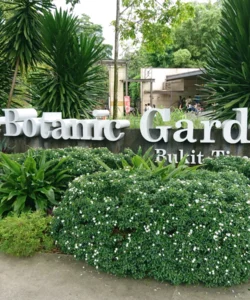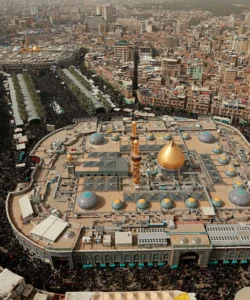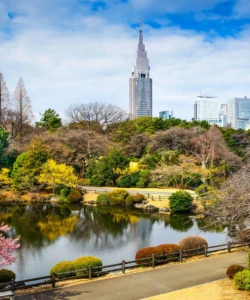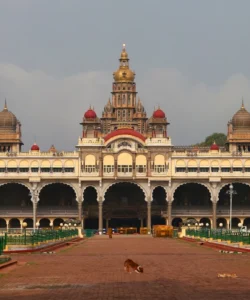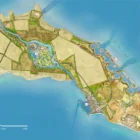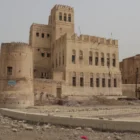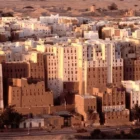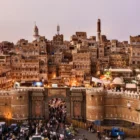Al Hamra Tower is a landmark skyscraper located in Kuwait City, Kuwait. Completed in 2011, it stands as the tallest building in Kuwait and is renowned globally for its unique, sculptural architecture, which combines aesthetics with environmental responsiveness to the desert climate.
Listen to an introduction about Al Hamra Tower
Name and Address
- Name: Al Hamra Tower (also known as Al Hamra Firdous Tower or Burj Alhamra)
- Address: 13085 Jaber Al-Mubarak Street, Kuwait City, Kuwait.
- Location: Prominently situated on Kuwait City’s peninsula, offering dramatic views over the Arabian Gulf.
How to Get There
Al Hamra Tower is centrally located in Kuwait City and is easily accessible by various means.
- By Car: Driving is the most common and convenient way to reach Al Hamra Tower. It’s located in the bustling Sharq district.
- Taxi/Rideshare: Taxis and rideshare services are readily available throughout Kuwait City and provide direct transportation to the tower.
- Public Transportation: While direct public transport options might be limited, visitors can use buses to reach nearby areas within Kuwait City and then take a short taxi ride to the tower. For example, from Kuwait International Airport (KWI), a bus and transfer combination can take approximately 1 hour and 15 minutes, while a taxi ride is about 20-30 minutes.
Landscape and Architecture
Al Hamra Tower is an architectural marvel designed by Skidmore, Owings & Merrill (SOM) and Ramshir and Callison. Its design is a thoughtful response to Kuwait’s intense desert climate and its urban context.
- Sculptural Form: The tower’s most distinguishing feature is its innovative, asymmetrical, and sculpted form. It appears to fold into itself, resembling a gradually twisted “ribbon” or even drawing parallels to the traditional Kuwaiti male garment, the “Thobe.”
- Height: Standing at 414 meters (1,358 feet) with 80 floors (or 85 floors by some counts), it is the tallest building in Kuwait.
- Materiality: The south facade, exposed to the most severe sun, is clad in brushed Jura limestone, punctured by a series of angled, carved windows designed to minimize solar heat gain. The east, north, and west facades feature curved vision glass, offering panoramic views of the city and Kuwait Bay while optimizing against glare.
- Structural Innovation: The building utilizes hyperbolic paraboloid reinforced-concrete walls that extend the full height of the tower, participating in both lateral and gravity force resisting systems. The design allowed for a column-free 24-meter-tall lobby.
- Interior Features: The tower includes a high-end shopping mall, office spaces, a health club, restaurants (including one with an observation deck), and playrooms for children. Skybridges connect the two wings on each floor, providing unique spatial experiences.
What Makes It Famous
Al Hamra Tower is famous for several notable attributes:
- Tallest Building in Kuwait: It holds the distinction of being the tallest building in the country since its completion in 2011.
- Tallest Curved Concrete Skyscraper: It is recognized globally as the tallest carved concrete skyscraper in the world.
- Award-Winning Design: Its innovative design has garnered numerous international awards, including being named one of TIME magazine’s “50 Best Inventions of 2011.”
- Environmental Design: The architectural approach that minimizes solar heat gain while maximizing views is highly regarded, making it a sustainable and aesthetically pleasing structure in an arid environment.
- Iconic Landmark: Its distinctive silhouette makes it a prominent feature of the Kuwait City skyline and a symbol of modern Kuwait’s economic progress and architectural ambition.
Differences from Some Other Landmarks
Al Hamra Tower stands apart from other prominent landmarks in several ways:
- Modern Skyscraper vs. Historical/Cultural Sites: Unlike historical sites like the Red Fort or cultural landmarks such as the Grand Mosque or Kuwait Towers, Al Hamra Tower represents Kuwait’s contemporary architectural prowess and its forward-looking vision.
- Form and Function: While other tall structures like the Liberation Tower primarily serve as telecommunication towers, Al Hamra Tower is a mixed-use development, combining high-end offices, retail, and recreational facilities within its striking form.
- Environmental Integration: Its design specifically addresses the challenging desert climate through its unique form and material choices (e.g., the limestone-clad south facade and the sculpted opening), a level of environmental integration that sets it apart from many other skyscrapers built primarily for height or aesthetic alone.
- Aesthetic Innovation: Compared to more traditional or purely functional tall buildings, Al Hamra Tower’s sculptural, non-rectangular form and the “carved” void on its south side make it an artistic statement as much as a functional building.
Al Hamra Tower Photos:































